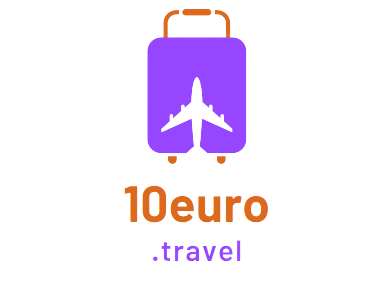No products in the cart.
Travel Guide
This Is How Long You Can Stay In Europe As A Digital Nomad Without A Visa
Last Updated
Are you a digital nomad dreaming of a move to Europe, but you’re not entirely sure how long you can stay in the continent without a DNV (Digital Nomad Visa)? We love that more and more countries are offering DNVs, but we also know they’re not necessarily easy to apply for, and the process can be very expensive and, at times, excessively bureaucratic.
So what about going at it visa-free?

Many nomads are not even aware, but you don’t even need a DNV to reside in Europe. Long-term tourists have been doing it for decades, even prior to the advent of digital nomadism, and while you certainly won’t have the same rights visa-holders do, there are still ways to remain in the continent for a prolonged time – even years – without breaking any immigration laws.
This is how:
What Is The Schengen Area, And Why Is This Relevant For Nomads?

There is a lot of misinformation online regarding how long foreigners are allowed to remain in Europe as digital nomads. We’re going to make it simpler to understand: if you haven’t applied for a European Digital Nomad Visa, which enables you to stay in the territory for a number of years, or an indefinite period, you are officially a tourist.
This means you must follow entry rules applying to short-term visitors, even if you intend to move there temporarily. As a general rule, we already know tourists can only remain in Europe for 90 days out of any 180-day period, but the rule only applies to countries enforcing the Schengen acquis, and who are, consequently, members of the Schengen Area.
But what does this even mean?
Top 5 Travel Insurance Plans For 2023 Starting At $10 Per Week

Schengen is a European Treaty allowing for the lifting of internal controls between signatory countries, ensuring the smooth flow of goods and individuals across the so-called Schengen Zone. In essence, driving from France into Spain, or Belgium into Luxembourg, Germany into Poland, and so forth, is as easy as going from California to Nevada.
There are no border formalities traveling between Schengen countries: passport control is already carried out at the external border only (e.g. when arriving from the U.S. into France, Spain, or any Schengen member). This makes Schengen the preferred ‘workcation’ spot for Americans in Europe, not only due to the lack of borders, which makes traveling less challenging and more fun but because it is where a majority of tourist destinations are located.

Today, there are 27 Schengen countries, with Croatia set to be the newest member from January 1. The full list can be seen below:
- Austria
- Belgium
- Croatia
- Czech Republic
- Denmark
- Estonia
- Finland
- France
- Germany
- Greece
- Hungary
- Iceland
- Italy
- Latvia
- Liechtenstein
- Malta
- Netherlands
- Norway
- Poland
- Portugal
- Slovakia
- Slovenia
- Sweden
- Switzerland

The only downside to the Schengen Agreement? Member states only allow visitors, and this includes digital nomads without a long-term visa, to remain for 3 months in a 6-month period: not individually per country, but as a whole.
In other words, if you have used up 30 days in France, then a further 30 in Italy, and a final 30 in Germany, you must exit all of Schengen immediately in order to avoid breaking immigration rules. You can only return to the 27-country strong Schengen Area once a further 90 days have elapsed. But where are you going to go?

This is where things start to get truly interesting: Schengen is a collective of only 27 countries, right? But the continent of Europe has 44 countries in total. What about the others? Does the 90 day-rule apply to them as well, or do they have different provisions in place? Ladies and gents, here’s the secret to spending longer than 3 months at a time in Europe:
You Don’t Need To Leave Europe After Using Up Your 3 Months In Schengen

Ever wondered how other nomads manage to bypass the 3-month rule and stay for months on end in the European continent? For starters, there is no ‘bypassing’ whatsoever. They are merely carefully planning their days inside and outside the Schengen Area in order to travel Europe for longer.
Any stays in a non-Schengen country do not count towards the 90-day limit; even if they’re European. Once you have hit the 90th-day mark, you have 18 other countries you can travel to, each for 3 months at a time, as you wait to be readmitted into the Schengen Area. If your aim is to live in Europe for a number of years, you can continue doing so repeatedly, never once being on the wrong side of the law.

In case you were wondering, these are the European countries that currently are not in Schengen:
- Albania
- Andorra*
- Belarus
- Bosnia and Herzegovina
- Bulgaria
- Cyprus
- Georgia
- Ireland
- Kosovo
- Monaco*
- Moldova
- Montenegro
- North Macedonia
- Romania
- Russia
- San Marino*
- Serbia
- Turkiye
- United Kingdom (England, Wales, Scotland, and Northern Ireland)
- Ukraine
- Vatican City*

*These European micro-states are not officially in Schengen, but since they do not maintain border controls with the Schengen states that surround them (France and Italy), Schengen rules unofficially applies to them. Thus, any stays in Monaco, San Marino, and Vatican City count towards the 90-day limit. Andorra, on the other hand, still maintains border controls with Spain and France, but access is only possible via land from other Schengen states.
Forget The 3 Months:
You Can Stay For However Long You Want In Europe

Unless you hold a Digital Nomad Visa for one of the above countries, you will usually be granted a 90-day per 180-day limit to remain, similar to Schengen. The only difference is that, being outside the border-free bloc, the above countries enforce the rule individually:
After spending 90 days in an alpine digital nomad retreat in Bulgaria, you are permitted to fly onward to Turkiye for a 90-day beach break in gorgeous Antalya, then the trendy Mediterranean island of Cyprus for a further 90, etc.

Some countries are far more generous than others, such as Albania and Georgia, which both allow U.S. passport holders to stay as tourists for an entire year visa-free, and the United Kingdom, where short-term visitors are issued a 6-month permit.
Regarding the latter, there is also no fixed time period you must wait until you are eligible for return: if you use up 6 months in the U.K. and you decide to leave only for a week before flying back for a new 6-month period, there is no impediment, as long as you observe a simple rule:

You must never spend longer than 180 consecutive days at a time in the Common Travel Area, a customs union comprising all four U.K. nations, namely England, Wales, Scotland, and Northern Ireland, and then the crown dependencies of Jersey and Guernsey (the Channel Islands), the Isle of Man, and the Republic of Ireland.
To answer your question: you can remain in Europe for as long as you want to as a non-visa holder digital nomad if you plan your stay wisely.
You Don’t Need A Digital Nomad Visa To Be A Digital Nomad

Naturally, if you’d prefer traveling the Schengen Area, or the U.K., or any individual non-Schengen country without having a date set to leave fixed to your passport, you’ll be better off applying for a DNV in the end. If that’s the route you’re taking, prepare well in advance for visa fees and financial requirement thresholds – they can be quite hefty – and gather all the relevant paperwork.
Alternatively, if you’re looking for more diversity and you don’t necessarily want to spend an entire year somewhere specific, now you know Europe is so much more than just the Schengen states, and there are countless ways to extend your stay without breaking the rules (while continuing to explore this History-packed continent). And, of course, without going to the trouble of applying for a visa at a Consulate.
Traveler Alert: Don’t Forget Travel Insurance For Your Next Trip!
↓ Join Our Community ↓
The Travel Off Path Community FB group has all the latest reopening news, conversations, and Q&A’s happening daily!

SUBSCRIBE TO OUR LATEST POSTS
Enter your email address to subscribe to Travel Off Path’s latest breaking travel news, straight to your inbox
This article originally appeared on TravelOffPath.com
Source link

